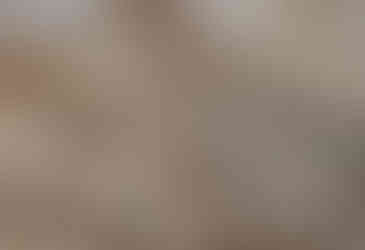Nature's Aesthetic
- Laura Thipphawong
- Dec 1, 2023
- 3 min read
Updated: Dec 7, 2023
Nature is beautiful: it might seem like a vapid kind of thing to say, especially considering so many of the threats to environmental health that the Earth faces today, like climate change, plastic pollution, and overdevelopment. As an environmentalist organization, and specifically one that focuses on the health of the ecosystem, it might seem particularly trivial to indulge in nature’s beauty. It can be easy to overlook the necessity of beauty in our lives, when there is so much at stake, when the news inundates the public with ultimate bleakness, when every facet of daily life seems politicized, and when self-seriousness trades like currency through social media. In such a somber world, to advocate for the value of beauty, or the concept of wonder, whimsy, imagination, or – dare we say – fun, can seem taboo.
It is, however, deeply human to seek meaning in our lives through what we consider to be visually pleasing. Art and nature are virtually linked together, and while most people likely know instinctively that pleasing images are healing, and that beauty has the power to evoke positive emotions and make us feel connected to something great, there is also scientific evidence that indicates a positive effect of natural beauty in a quantifiable way.
Left, Rock formation in Georgian Bay, Ontario Right, Tree in a redwood forest, California Photos by Laura Thipphawong
Nature's aesthetic is full of patterns and fractals – self-similar forms that recur mathematically within their own structures, in a way that is inherently pleasing to the human eye. According to mathematician Benoit Mandelbrot, who coined the term fractal, fractals are: “therapeutic, beautiful, [and] increasingly useful.” Mandelbrot ascribes the term useful here as beyond the state of being beautiful, and of having practical benefits such as with engineering and economic analysis. In an interview with PBS, Mandelbrot takes issue with fractals being ascribed as pretty but useless, because of the apparent socioeconomic usefulness they have for analyzing systems such as the stock market. This is a perspective that refrains from the concept of impractical value, where the aesthetic magnetism of fractal patterns is useful in and of itself.
Left, Tree in a redwood forest, California Right, Rock formation in Georgian Bay, Ontario Photos by Laura Thipphawong
There is a sense of unity and a deep-seated comfort to be found in the repetition of nature's geometry. In fact, fractal patterns have been proven to relieve stress and physical pain, altering our autonomic response simply by looking at them. There are plenty of physiological reasons for this phenomenon – we are, after all, visual creatures, and our self-similar biological processes tend to mirror fractal patterns, and the use of fractal imagery for physical healing has been scientifically studied in terms of both measurable and abstract processes.
The National Library of Medicine notes several cases of fractal analysis in use during surgical recovery as a means of measuring the healing process. On a more abstract level, a study in Leonardo, a peer-reviewed contemporary science journal published through MIT Press posits the incorporation of fractal art into public architecture as a way to reduce collective stress levels. As well, the often-cited seminal study by Robert Ulrich in 1984 on patients recovering from surgery in a hospital room showed a correlation between faster healing times and staying in a room with a window overlooking trees.
Left, Rock formation in Georgian Bay, Ontario Right, Tree in a redwood forest, California Photos by Laura Thipphawong
Regardless of whether people are consciously using the aesthetic qualities of fractal geometry and natural patterns for the purpose of healing and wellness, it should be clear that usefulness is not simply a calculative state. The beauty of nature showcases its natural patterns, its balance and uniformity, and acts as a reminder of interconnectedness within the natural world.
Left, Rock formation in Georgian Bay, Ontario Right, Tree in a redwood forest, California Photos by Laura Thipphawong




















Spending some time on this site feels quite informative without being overwhelming. The discussion around saving money through cashback on ole99 blends well with the practical insights on identifying unreliable reviews found on ole99. Everything feels connected when browsing through ole99.
The website gives a comfortable first impression with a clean layout and clear structure. General information is easy to find on nixtoto, while menu details are well presented on nixtoto.
Overall, the structure feels thoughtfully arranged and easy to follow. Older materials from sultan33 help set the background, while recent manga updates are clearly discussed on sultan33. For readers looking for a complete reference, sultan33 fits well.
This website demonstrates a structured approach to service information. Venue arrangements are described on sultan33, while reservation inquiries are managed via sultan33. The main homepage on sultan33 ties everything together.
The guardians of the galaxy star lord jacket captures that Guardians energy — bold, heroic, and effortlessly cool.